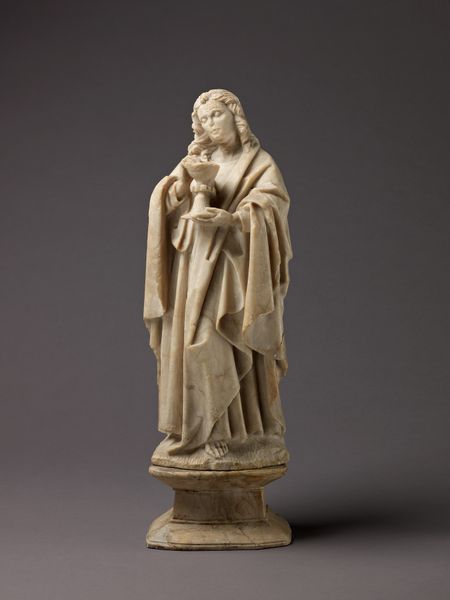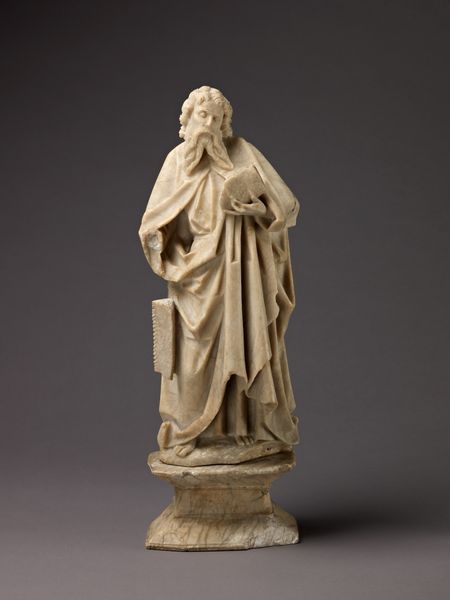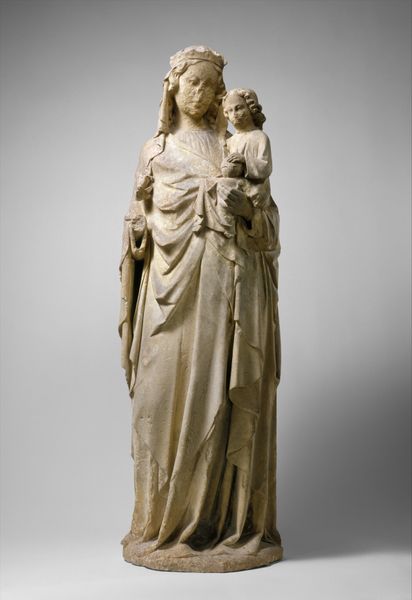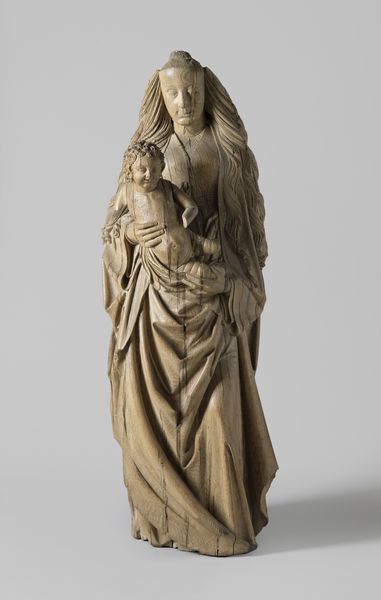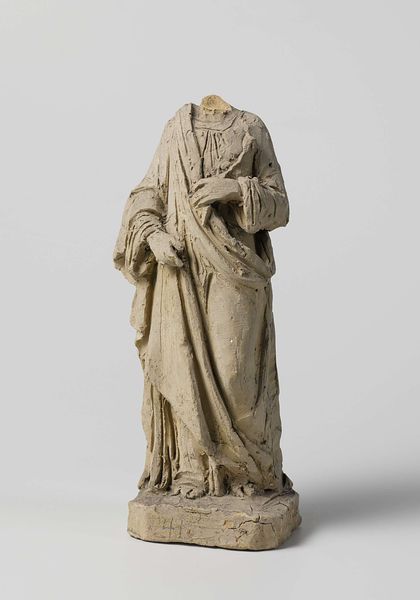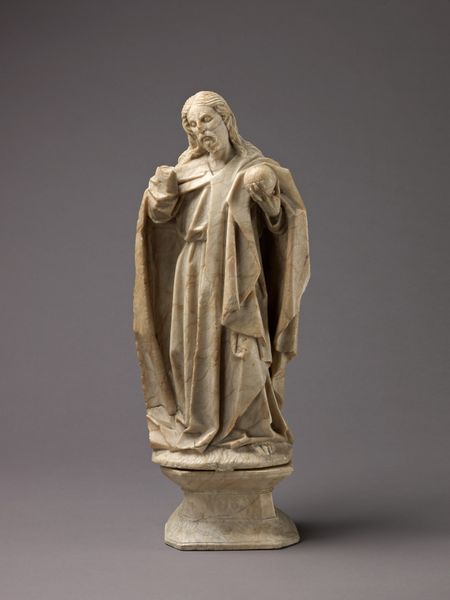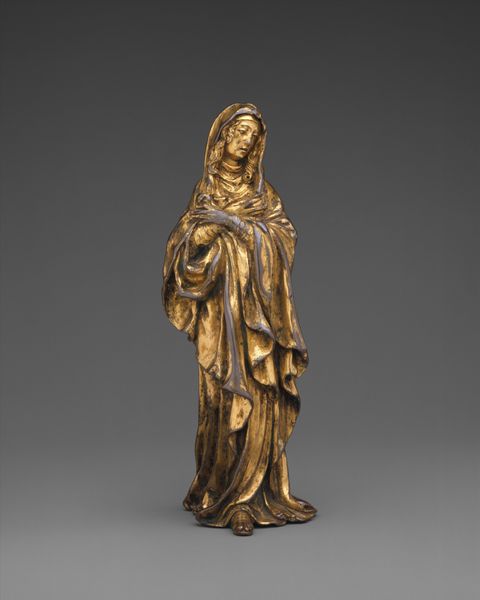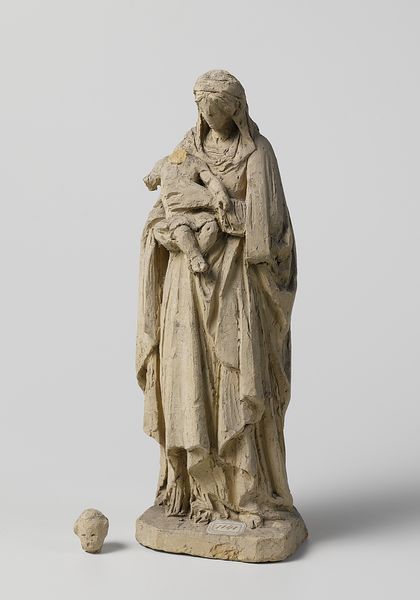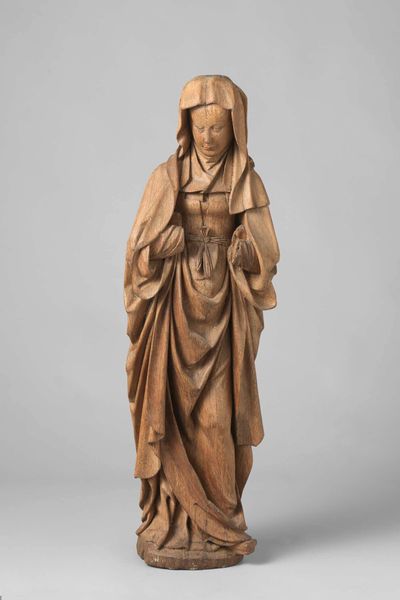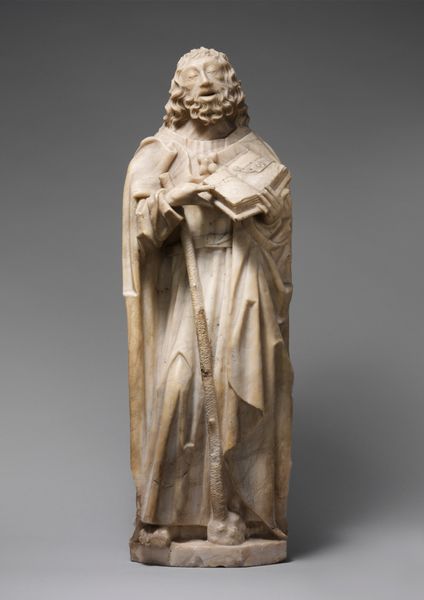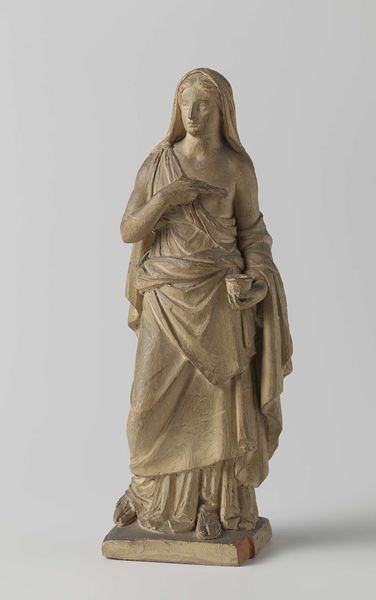
carving, sculpture, wood
#
portrait
#
medieval
#
carving
#
stone
#
sculpture
#
figuration
#
sculpture
#
wood
Dimensions: H. 34.1 cm (excluding base), h. 6.4 cm (base).
Copyright: Public Domain
Curator: Here we see an example of Southern Netherlandish sculpture from the mid-15th century, representing Saint Matthew. The piece, whose author remains unknown, combines wood and stone elements. Editor: There's a subdued solemnity here, isn't there? The texture and color give him an aged feel, like he’s carrying the weight of centuries, embodying a lineage. Curator: Yes, and notice the book, slightly obscured in his left hand. A potent symbol of Matthew's role as an evangelist. Consider, too, the angel near his feet. The traditional symbol for Saint Matthew in Christian iconography. It underscores the divine inspiration he received when writing his gospel. Editor: It's positioned so awkwardly. And his clothing... he looks like he’s caught in a draft! Was this just artistic convention, or does it speak to some specific social messaging around faith, class, and piety? Perhaps showing the apostle humbled and exposed, in service of the divine? Curator: Costume in art offers many narratives. In religious art, robes signify spiritual authority and transcendence. The specific style reflects the cultural conventions of the time, as much as religious messaging. There's a continuous effort in visual representation to create understandable religious figures, so the robe provides familiarity and legibility. Editor: I'm still thinking about how the choice to depict him with threadbare elements affects how people receive this figure. If Matthew here is the emblem of holy scripture and inspiration, what’s implied through presenting him in such a modest and—dare I say—earthly fashion? Curator: You raise an interesting point, and these objects had clear societal roles back then. Sculpture within religious spaces helped to connect people to holy stories. Its value was the tangible embodiment of otherwise difficult-to-fathom spirituality. The materiality, then, can remind us of his place as mortal, with a mission. Editor: Thinking of contemporary culture and our engagements with symbolic communication, what meanings from Matthew’s narrative and visual markers persevere today, do you think? Curator: Symbols like Matthew can, by virtue of history, continue to resonate. Religious artwork becomes more secular, while the symbol becomes culturally independent. Editor: Exactly, a constant negotiation of our visual landscape. Curator: Yes. So much more to think about here, in and beyond the artistry itself.
Comments
No comments
Be the first to comment and join the conversation on the ultimate creative platform.
